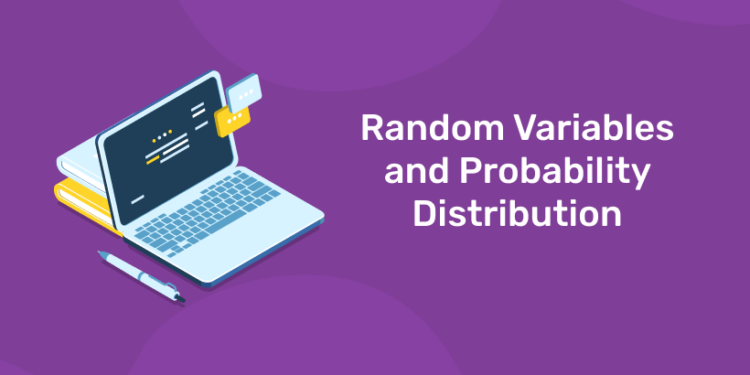Table of Contents
Two important aspects in machine learning are understanding basic statistics. Within that, a deep knowledge of random variables and probability distribution is necessary. Hence with this article, we are helping you to learn the concept of random variables and probability distribution, which will make your machine learning journey a bit more easier.
Start your Data Science Journey with Expert Mentors! Get a free Demo Here!
Random Variable
A random variable is a mathematical function that links a distinct numerical value to each experiment result. It can accept any one of the several possible values, making it a variable. Since each possible value carries some element of chance, it is random.
The most frequent way to represent a random variable in probability is with a capital X, after which the random variable is given a value by the small letter x. If you flip a coin twice, for instance, the following describes the sample space for the potential outcomes:
S={HH,HT,TH,TT}
The following can be used to determine the random variable X:
X={HH,HT,TH,TT}
Random variables come in two different varieties.
Continuous random variables and discrete random variables
Discrete Random Variables
1: Which of the following algorithms is most suitable for classification tasks?
Discrete refers to something distinct and unique. Therefore, discrete random variables are only capable of taking on integer values. Decimals and fractions are never included. Discrete probability distributions result from discrete random variables.
Examples:
Total of roll of two dice:2,3,….12
Number of desktops sold:0,1,…
Looking for a Data Science Career? Explore Here!
Discrete Random Variable Application
- The quantity of aircraft that take off and land at a given time in an airport. Every day, 2 PIA flights arrive at the King AbdulAziz Airport in Jeddah from the airport in Islamabad, and 2 PIA flights depart from this airport. 2 is therefore a discrete number. And is a discrete random variable with the symbol X.
- A communication system with a specific number of lines for voice and data communication exists in every commercial organization. Discrete variables are used when we need to know the likelihood of how many lines are active at once.
🚀 Start Coding Today! Enroll Now with Easy EMI Options. 💳✨
Equip yourself with in-demand skills to land top-tier roles in the data-driven world.
Start Learning Now with EMI OptionsContinuous Random Variable
Random variable’s opposite is continuous random variable. Continuous random variables can have any value, including decimals and fractions. Continuous probability distributions result from continuous random variables.
Examples:
- Interest rates: 4.55%, 7.9%
- Task completion time
Continuous random variable Application
- Continuous random variables can be used to define the reaction temperature error regardless of the probability density function
- Let’s say the probability of a construction project finishing in 20 to 24 months is 0.5.
Probability
Probability measures how likely it is that a particular event will take place. When describing a probability, you might use a figure like “10% chance” or a phrase like “impossible.” Unlikely, conceivable, even chance, probable, and unquestionable.
For instance, The likelihood of rolling a “4” on a die
Solution: There is only one possible scenario.
There are 6 results.
The chance then equals 1/6.
Probability line
A representation of an experiment’s event probability along a linear axis where the results are determined by chance.
Discrete Probability Distribution
Using data from a discrete distribution, a discrete probability model attempts to model or predict a result, such as the price of an options contract or the likelihood that a market shock will occur within the next five years.
A discrete random variable’s possible values are displayed along with the corresponding probabilities in a probability distribution known as a discrete probability distribution. A discrete probability distribution, in other words, estimates the probability that each conceivable value of a discrete random variable will actually occur.
Some often used discrete probability distributions are Bernoulli, geometric, and binomial distributions.
Continuous Probability Distribution
Continuous or discrete probability distributions are the two types of probability distributions. A continuous distribution has an infinitely wide range of values, making it uncountable. Time is one such example; you could count from 0 seconds to 1 billion, 1 trillion, and so on, indefinitely. A discrete distribution has a set of countable values.
Examples:
- The city’s annual rainfall, measured in inches.
- The newborn baby’s weight.
Start your Data Science Journey with Expert Mentors! Get a free Demo Here!
Wrap up
A crucial part of data analytics and machine learning is statistics. Finding hidden patterns through data analysis and visualization is made easier. Learning programming and statistics together should be your first step if you are interested in machine learning and want to advance your career in this field. With this article, we have covered some basic, but important aspects of random variables and what a probability distribution is.
Hope you find this blog helpful!












